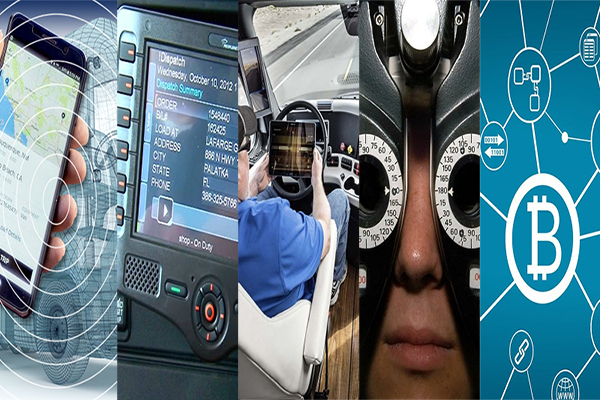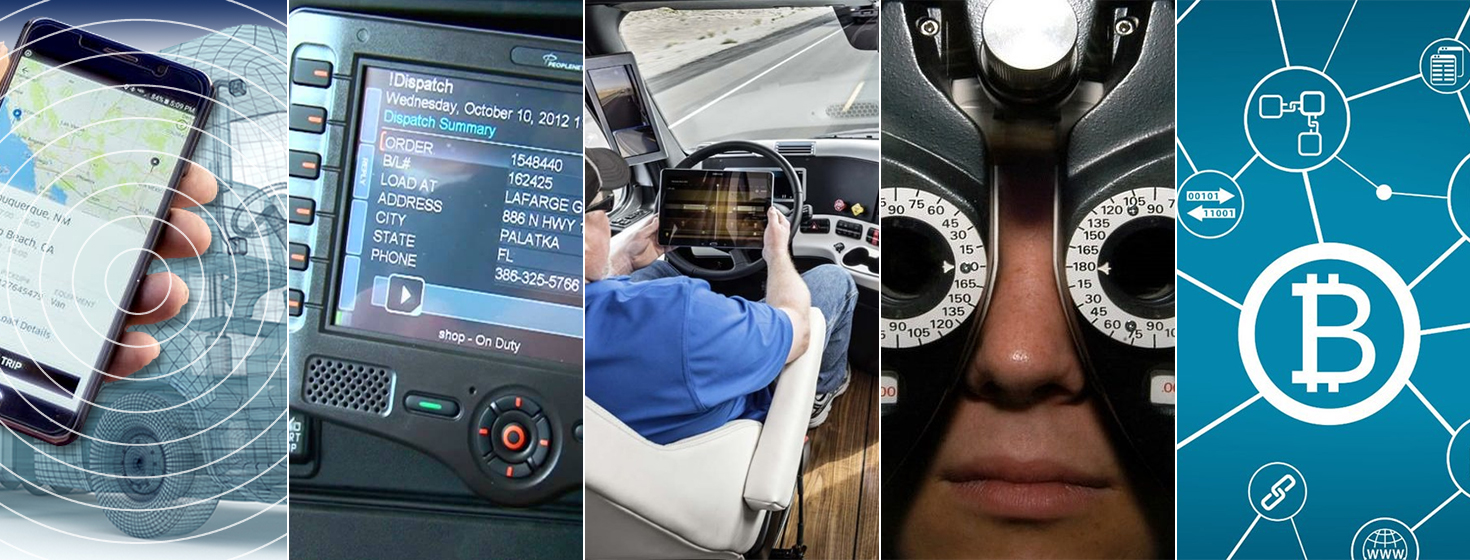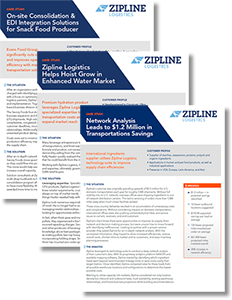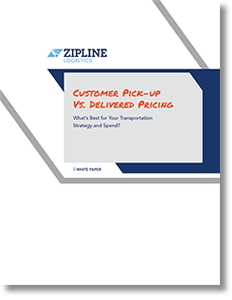The Changing State of Logistics
The logistics industry is in a rapid state of change and advancement, and its sophistication and development are a work in progress.
It seems like every day and every week a new value proposition comes along that continues to shape the industry.
This changing environment, particularly ongoing technology trends, brings up some fundamental questions worth pondering.
Being somewhat philosophic, the answers will change as new innovations, ideas, processes, and technology make further inroads.
Here are 5 big questions that are worth looking into.
1. Logistics technology startups seem to emerge daily, will these transportation disruptors succeed?
“Disruptors” is the new moniker for innovators in the contemporary digital world. They often seem to come from nowhere and bring a shattering business model that either succeeds through the roof or flops.
Success for a disruptor, regardless of industry, comes down to one truth-telling attribute: value.
Uber was a successful disruptor with their rideshare efforts because there was underutilized cars/capacity. However, when they tried to enter the freight market, they have not been so successful. Uber Freight is trying to change the space without adding any real value to the market.
More Articles on Uber Freight
There are not underutilized trucks or drivers sitting idle. Digital freight-matching platforms (like Uber Freight, among others) have almost zero adoption. In some transportation surveys, they represented a paltry .02 percent of prevailing freight volume.
Disruptors, however, aren’t bad for logistics and transportation. Disruptors that are enabling other logistics companies to be more efficient are the ones who are proving successful.
This includes businesses like project44 and Descartes and cloud-based SaaS and on-premise software applications like Transportation Management Systems (TMS), Warehouse Management Systems (WMS), and others. They represent true blue technology innovations that have a valuable place in the supply chain and are making stakeholders more efficient and profitable.
When disruptors bring value, they succeed. The focus should be on tangible impacts, not just digitization for the sake of technology adoption.
2. Will electronic logging devices impact safety in trucking?
Electronic logging device (ELD) implementation has already shown major impacts on transit times. This means there were more drivers fudging HOS numbers than initially suspected. But with a bit of patience and time, wages will increase to meet HOS, and drivers will no longer feel the need to work overtime to make ends meet.
But to answer the question, yes, ELDs will certainly improve transportation safety. Much math and science were involved in the research and safety studies that supported the adoption of ELDs. The hours of service (HOS) regulations have merit. If followed, they should lead to safer roads.
In time, their merits will be seen in improved safety records as well as a means of objectively recording driving hours.
3. Will self-driving vehicles improve safety and become a reality in the trucking industry?
There is so much heart and soul, as well as capital, invested in the success of autonomous vehicles. But we are a long way from driverless semi trucks becoming a reality.
In fact, all the chatter about achieving completely autonomous vehicles could be harmful to the overall effort and underlying cause (overcoming driver shortages).
A better approach is to focus efforts on incremental change and advancement aimed at autonomy and connectivity to assist drivers, rather than completely replace them.
This strategy will continue to improve their operation and instill confidence in the general public (who may be a bit skeptical after recent autonomous crashes).
With time, attention, and dedicated effort, drivers will soon have an improved job experience and safer environment. Features and attributes will use technology and automation to ensure protection from lane departures, blind spots, and maneuverability errors. These enhancements will make the job easier, safer, and more appealing. Consequently, such features will solve problems long before the wide adoption of a completely autonomous semi-truck.
Focus on today’s issues first. Embrace innovations for the future. Be patient as they mature.
4. Will supply chain transparency and visibility ever be widespread?
Yes, we are making progress; but it is going to take a while. The tools for full transparency are available to those who have a unified set of assets. But without a globally accepted set of communication protocols, full supply chain transparency can’t be achieved.
In time, protocols will be established, blockchain will be more prevalent, and full-fledged visibility and subsequent control will be at steady state, steady flow. Right now, the market is highly fragmented with a wide range of connectivity, starting all the way at zero. We are still far from complete application program interface (API) connectivity among all trucks and fleets.
Blockchain technology - a robust means of traceability through a distributed ledger system - will progress. This will be a game changer for transparency, visibility, and control. Industry collaboration via organizations like Blockchain in Transport Alliance (BiTA) and other associations will continue to lay the groundwork for the universal protocols needed to achieve the visibility and control that will bring value to the supply chain.
5. Will blockchain technology help with customs documentation and other transportation record-keeping?
When blockchain technology gains more traction within the supply chain and logistics industries, the burden of documentation will lessen.
A recent Supply Chain 24/7 article cited shipping company Maersk, who conducted research three years ago when they followed a refrigerated container transporting roses and avocados traveling from Kenya to the Netherlands. The journey took 34 days – 10 of which were idle waiting for paperwork.
A Maersk executive told Bloomberg Reporter Kyunghee Park, “The paperwork and processes vital to global trade are also one of its biggest burdens. The paper trail research that Maersk did uncover the extent of the burden that documents and processes inflict on trade and the consequences.”
Maersk has commissioned IBM to monitor its cargo and documents in real-time, using blockchain.
The litany of required customs documentation is costly and just plain burdensome. The good news is that it is one of the lowest hanging fruits for blockchain to solve. The blockchain is a byproduct of the cryptocurrency (think Bitcoin) movement. It provides an uncanny level of security in that no entity in a supply chain can cover up a mistake by altering a database entry.
Because blockchains are ledgers open to anyone in a transaction, everybody is watching. In the supply chain, it could include manufacturers, customs agents, shippers, regulators, 3PLs, carriers, and drivers. A chain may extend from raw materials to finished goods on a consumer’s table.
A Bloomberg analyst called blockchain “the biggest innovation in the industry since containerization.”
But many links in the supply chain aren’t fully onboard with blockchain - yet. As blockchain technology becomes more refined and prevalent, it will provide many benefits.
Read: Why Every Company Will Be Using Blockchain By 2027
These questions are among the many that prevail in our industry. Their answers are temporal. As our dynamic changing and growing environment changes, so will the answers to such questions.
Related Article: Logistics Freight Consolidation and Its Benefits to Shippers
Related White Paper & Case Studies
3 Case Studies Detailing On-site Consolidation, Transportations Savings, and Network Analysis
See how Zipline Logistics instituted an on-site consolidation program for Evans Food Group, cutting landed costs per pallet by 20 percent and reducing spending by $10,000+ per month, plus 2 other case studies on transportation savings and network analysis. Download Now!
Customer Pick-Up vs. Delivered Pricing: What’s Best for Your Transportation Strategy and Spend?
In this white paper, you will learn more about this important decision and how food and beverage transportation professionals can determine the best strategy for their operations. Download Now!
More Resources from Zipline Logistics
Article topics
Email Sign Up



















